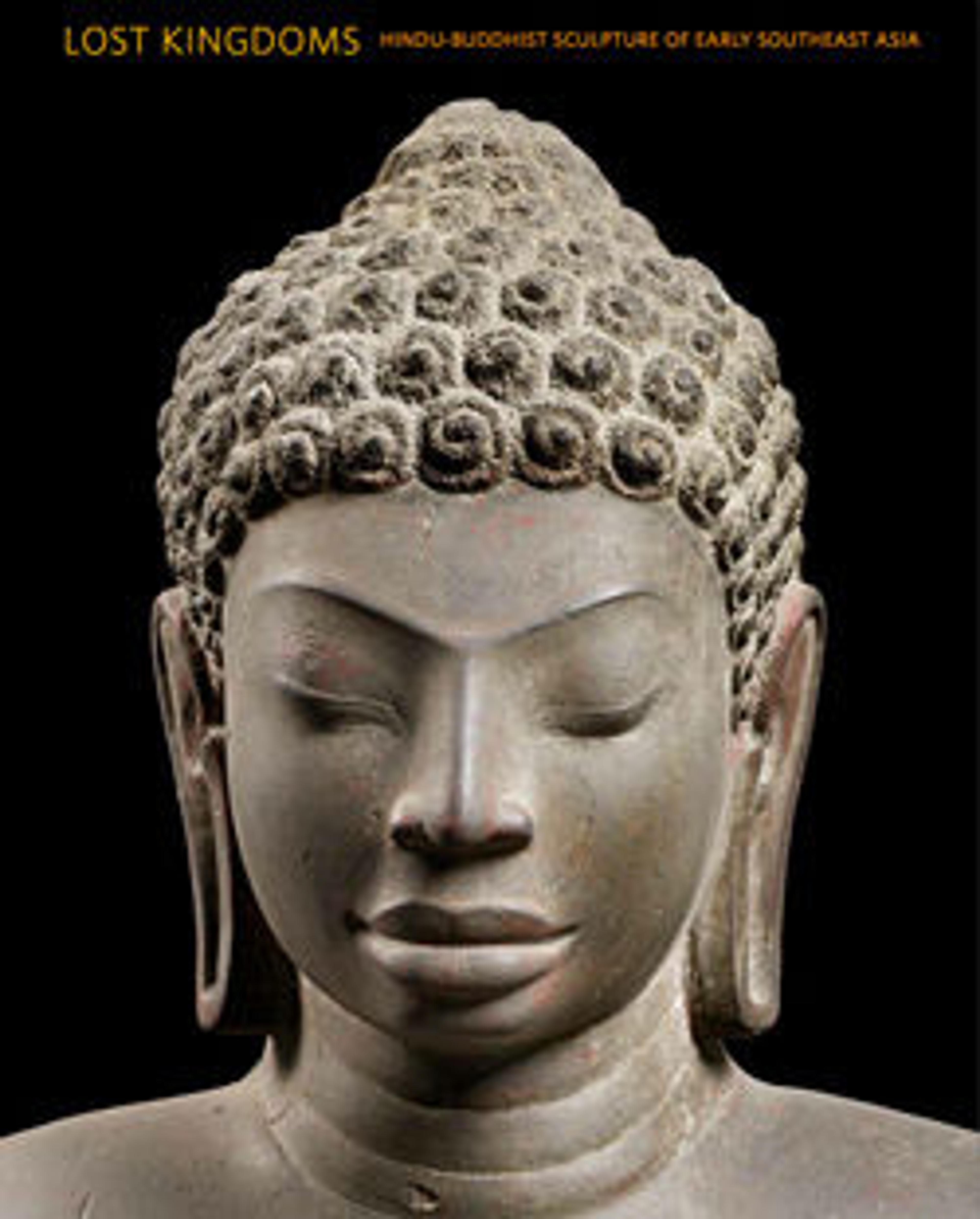Yaksha, possibly Kubera
Spirits—some protective, many malevolent—have always populated the landscape of Southeast Asia. Among the earliest surviving figurative sculptures from the region are enigmatic images best understood as personifications of the land and its elements—rocks, rivers, and trees. These nature-cult figures (yakshas and yakshis) existed alongside the emerging Hindu culture in mainland Southeast Asia and reflect a marriage of the two traditions. In an Indic setting, this deity probably represented Kubera, king of the yakshas and guardian of nature’s wealth.
cat. no. 14
cat. no. 14
Artwork Details
- Title:Yaksha, possibly Kubera
- Period:pre-Angkor period
- Date:late 6th–early 7th century
- Culture:Vietnam
- Medium:Sandstone
- Dimensions:H. 13 3/4 in. (34.9 cm); W. 14 in. (35.5 cm); D. 6 in. (15.2 cm)
- Classification:Sculpture
- Credit Line:Gift of John and Evelyn Kossak, The Kronos Collections, 1983
- Object Number:1983.550
- Curatorial Department: Asian Art
More Artwork
Research Resources
The Met provides unparalleled resources for research and welcomes an international community of students and scholars. The Met's Open Access API is where creators and researchers can connect to the The Met collection. Open Access data and public domain images are available for unrestricted commercial and noncommercial use without permission or fee.
To request images under copyright and other restrictions, please use this Image Request form.
Feedback
We continue to research and examine historical and cultural context for objects in The Met collection. If you have comments or questions about this object record, please contact us using the form below. The Museum looks forward to receiving your comments.
